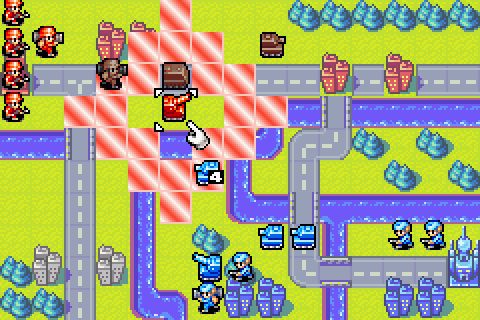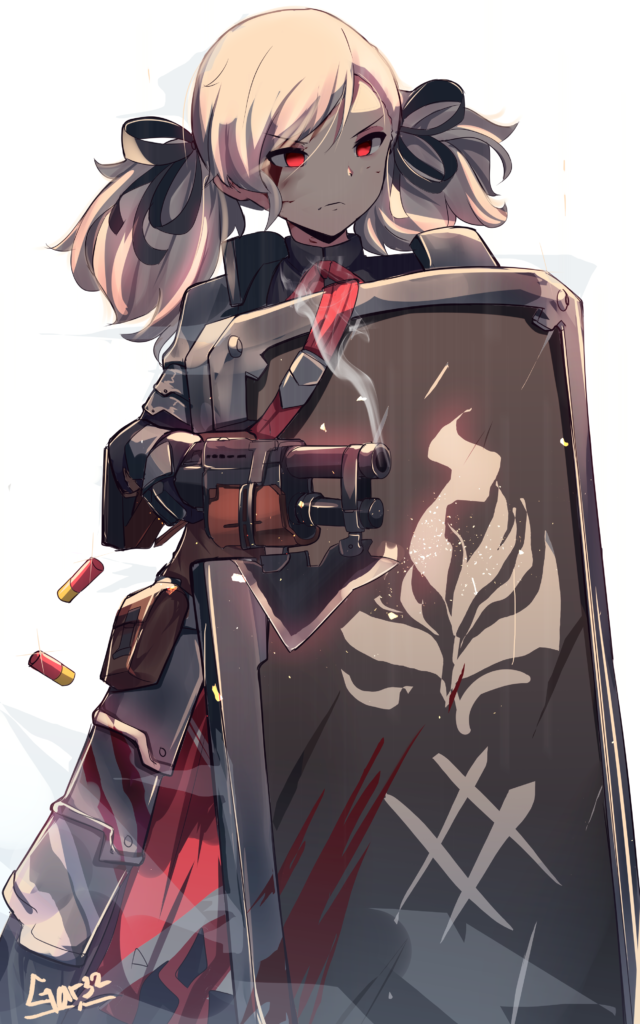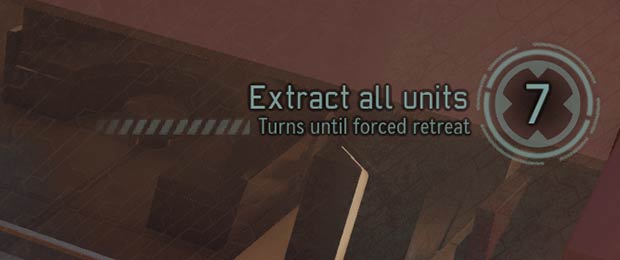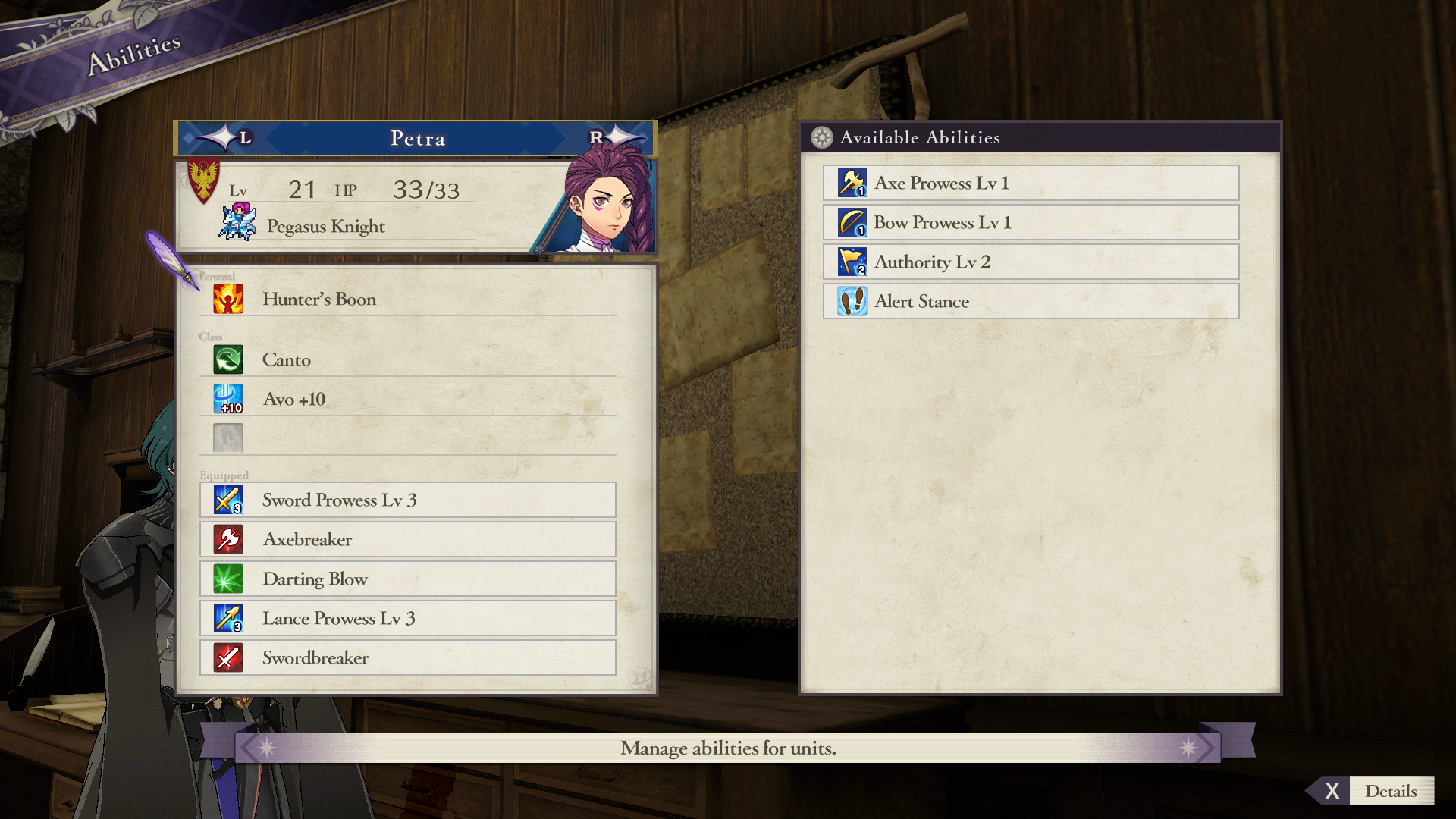So now that we have a (rather vague) understanding of what Astral Horizon is meant to be about and why it’s so clearly the best, the obvious thing to do is work out some kind of game-like framing for my ideas. The game is already in development but I’m going to pretend these ideas are new for dramatic purposes. There are really two big things to talk about here: the core pillars and game structure, and the central gameplay loop – in this case, the combat!
For this post let’s focus on the design of the combat, since it’s the most important part of the game, where we expect players to spend most of their time.
Astral Horizon’s combat is meant to be tactical. Turn-based, grid-based, and focusing on a small squad of specialized characters whose strengths the player will need to exploit in order to overcome a more numerous enemy. Common battlefields will be swashbuckling boarding actions on starships, foreboding high-tech ruins from ancient transhuman civilization, and strange uncharted worlds.
There are lots of ways to slice a tactics game: low-information unit-level tactics like X-COM where gameplay is dominated by cover and line of sight, high-information army-level tactics like Fire Emblem where enemies are in plain sight and units’ board positions and roles form chess-like puzzles. There are highly deterministic tactics games where the player is meant to predict future outcomes (Into The Breach), and highly random ones (X-COM again) where reacting to the unexpected and planning for uncertainty is the skill du jour.
For AH I’ve decided to stick to a few central ideas:
Units Should Be Unique
This is a game about a colourful cast of characters, their interactions with one another, and the unlikely crew they form together in order to sail the stars. As such, it stands to reason that every character should bring different tactical possibilities to the table in combat. In fact, let’s go one further: a wise player will pick characters to suit the mission objective.

If a mission features a lot of systems and locked objects, the squad should be best served by a hacker or thief. If instead it’s full of heavily entrenched enemies, a grenadier or shield-toting vanguard should grant a big advantage. This already informs other parts of the design: for this idea to work, players will need sufficient information to choose a party before the mission starts. We can accomplish this by letting them view the map and some of their enemies ahead of time.
Like in a MOBA or JRPG, each playable character can bring their own kit of abilities that serve a common role in a unique way without being locked to too strict a class system. One medic might gradually heal a wide area with ally-targeting “grenades”; another might focus on draining enemies’ HP and redistributing it to a specific ally – both ideal in their own scenarios. For this we’ll want a familiar RPG framework of buffs, debuffs, stacks, cooldowns, and so on.
Enemy units don’t have to follow this paradigm – faceless mooks defined only by their weapon or job are a perfectly fitting abstraction for this setting, and will help the player easily identify threats and hatch plans. We can save the personality for their leaders and bosses – and of course, recruitable characters that start out on the other side.
Positioning Should Matter
I find the chess-like zen of arranging units for a perfect counter-attack in Fire Emblem to be one of tactical gaming’s great joys, so let’s try to recapture it in AH. Right off the bat this makes one decision for us: units should not be able to influence a large number of tiles without moving.

What allows games like FE and Advance Wars to be so deep with such simple mechanics is that units generally can only attack a limited number of tiles (adjacent for most, 2-3 for ranged units). That means just to make an attack, a unit needs to find a good position to fire from that’s both defensible and in range of their target. More importantly, it means that by studying the enemy’s movement paths, you can block off danger to fragile units by placing tougher ones in the way.
On reflection, this setting has quite a few guns and projectile weapons implied in it. Rather than imitate Fire Emblem directly, we can try a more interesting approach: guns will shoot bullets several tiles, but only in cardinal directions. Units can now open fire from a range, but will need to line themselves up on either axis to get a shot with most weapons.

To seal the deal, let’s make another assertion: bullets will hit the first thing in their path, no matter what it is. Now units and objects in the environment can shield others when positioned properly, and we can play around with penetrating bullets and overhead ballistic shots.
Units shielding others? This creates an easy unit archetype for us right away: vanguards with big riot shields. These hearty souls will be slow to move, but pack powerful shotguns and pistols and absorb extra punishment from their shielded side. Perfect for guarding more fragile units or entering dangerous territory, or providing an obstacle for players to flank when used as enemies.

Finally, we can draw one more idea from this notion of shields: units will have a directional facing. It stands to reason that a shield protects you better from the front, and it’s harder to avoid a shot from behind. This rewards units for flanking and making surprise attacks – in other words, it rewards positioning!
Usurp The Miss Chance
Let’s do things a bit differently now. In fact, let’s do something no game I can think of has ever done: let’s usurp the miss chance.
Okay, I know what you’re thinking: isn’t the random uncertainty of a missed attack a cornerstone of game design? Isn’t some degree of randomness basically assumed in any system that crunches numbers to represent fighting, with decades of evidence to prove its value?
Well… yes! So rather than kill the random aspect, how about we alter the “miss” part? I’m going to say that every unit can React to attacks in some way.
This Reaction serves as our “bad result RNG”. What happens varies by what the unit is, but it’s always bad for the attacker: deflecting shots, blocking, triggering regeneration or other buffs, moving the unit, or simply avoiding the shot all fit here. We can vary up the trigger conditions for more interest too: blocking works against AoE, but dodging doesn’t.

Now some units will be slippery, with projectiles sometimes passing through them to hit unintended objects behind, while others can act as walls or even reflectors. We can even create some interesting situations like creatures who heal back all their damage over time from one type of attack, or robots with a chance to explode violently when hit from the side.
Since we determined that units have a directional facing earlier, another easy win is that units will react more or less often based on the direction of the attack. With this we can making facing even more important.
And The Mana Bar!
Resource systems are basically a necessity for any interesting combat engine because they allow abilities to differ in power: cooldowns, stacks, mana, HP, and chained abilities are all expressions of this same idea. Limitations on powerful abilities are a great idea because they preserve the value of less powerful ones, and force the user to consider when is best to use their trump card.
For Astral Horizon, we’re going to use our resource systems to address a nasty problem in every turn-based game, which is the uncertain value of a turn.
Both energy systems and cooldowns use the turn as the cost of power. In exchange for X amount of time, paid before or after, you gain access to a powerful ability. However, depending on a whole slew of factors a turn’s value can change dramatically. If you’re trying to find and defuse a bomb, every turn’s actions are crucial; if you’re sniping at an enemy stronghold undetected, you might be able to smash through 15 turns without even acting and suffer no disadvantage.
This makes it very hard to balance abilities that rely on classical cooldown mechanics in tactics games, since if a turn is ever not precious they can potentially be used for free and lead to degenerate strategies that dominate gameplay.
If you’ve ever wondered why X-COM 2’s objectives are all timed, it’s almost certainly an attempt to counteract this problem, which was prevalent in the first game in the form of the dominant strategy of creeping forward in overwatch mode. Overwatch grants a huge situational advantage (shooting on the enemy turn from a safe position) in exchange for half of a unit’s turn – but that lost half-turn is only a meaningful cost if the player is under time pressure. As a meticulous plotter who enjoys taking my time and engineering the perfect attack, it’s not a solution I appreciate.

I’m going to approach this problem from a different direction, and assert that cooldowns will not be a primary balancing measure and units should only gain resources by participating in combat.
For AH we’ll give every unit an Energy bar that fills when they interact with the enemy – either by being attacked, attacking foes, or healing damage done to allies. Energy will be used for powerful abilities, much like a mana bar, but it won’t regenerate over time. This allows players to play as defensively as they like, but offers them no additional benefit for doing so. I also like how this incentivizes counter-attacks – a unit will find itself with a nice pool of energy after taking a big hit, allowing it to dramatically strike back from the verge of death.

Not every ability needs to use Energy, but to serve the system every unit should have an Energy-using ability. Easy additions to the above concept. It might even be fun to give every unit a “limit break” ala Final Fantasy, which needs the full 100% bar to pull off.
We can still use cooldowns to prevent abilities from being spammed if need be, but they no longer need to act as the sole limiter on power. We have other tools to balance strong abilities too, such as limiting how many times they can be used per mission.
Finally, we can try to change the Energy mechanics to set some units apart: maybe there’s an android character who only gains Energy from electrical sources and item use, or a sniper whose bar goes up to 200% for a lethal headshot.
Units Can Shift Their Role With Loadouts
Completely static units that only grow stronger over time would be boring, so it only makes sense to assume that each character has some wiggle room within their role on the battlefield. We can do this quite easily by assuming that characters can equip different main weapons and skills before battle, but only weapon types they know how to use.
This way we keep units in their general roles through weapon proficiency, but allow players to specialize them for the upcoming mission within the pools of weapons and skills they can use. Skills will still be unique to the unit – they’ll just only be able to choose a limited number of skills from their pool to take into battle.
A great example of this can be that every character has several passive skills, but only one passive skill slot. An example would be a hunter who can choose either [+2 to movement range when above 75% HP] or [+3 DEF when adjacent to cover].

Note that I’m also preventing units from changing their weapons mid-fight. This is to reinforce the idea that units have defined roles on the field, and to lend the loadout stage choices more weight. It also allows us to design more creative weapons down the line without worrying about exploits where a unit avoids consequences or combines effects by swapping guns.
Let’s also allow for the fact that some units may have a backup weapon slot. It makes sense that a gunslinger might carry two heavy pistols, or a captain the classic cutlass and pistol combo. A Soldier archetype I have in mind hinges on this concept, with skills that do a different thing depending on which weapon type is currently equipped.
Finally, we can assume that every unit has an inventory which holds up to 4 items by default. Units will need to loot treasure and carry key items for mission purposes anyway, so it only makes sense to allow for some carefully designed consumables in this limited inventory space to let players customize their role just a little further.

This is by no means a comprehensive list of the concepts I’ve put into Astral Horizon’s combat, but it’s a good preview of the biggest ideas that drive it. Thanks for reading this far, and I’ll see you again next time!